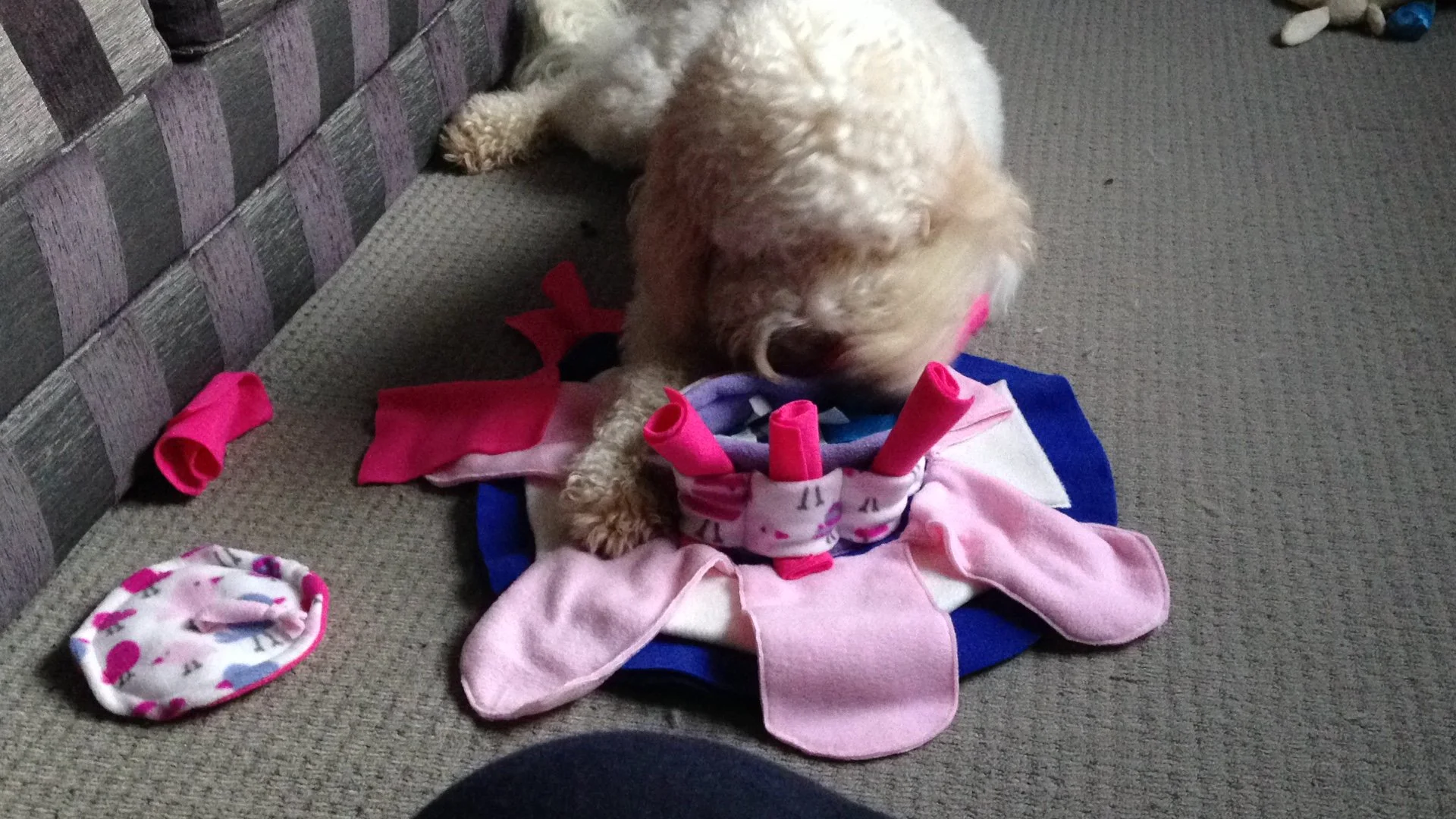Should I be constantly challenging my dog?
Article copied, with kind permission, from Tessa Savelkoel of Puzzle Dog
“THIS MONTH'S CONTEMPLATION: PUZZLES HAVE TO BE DIFFICULT! OR NOT?
It’s a smart dog
That’s what I often hear people say about their dog. And guess what? It’s true!
I think each and every dog is smart. They all have their own area of smartness; they’re all different, but they’re all smart!
That amazing and smart dog gets offered a puzzle: perfect!
And then comes the part where we humans go too fast . . .
The puzzle we offer is very difficult puzzle and we offer it with all elements in its most difficult form.
We put the puzzle in front of the dog, take a few steps back and start filming.
The dog sniffs his new puzzle, he smells the treats, and tries to find them. He uses his nose, his mouth, his paws, but nothing moves and the treats stay hidden.
We laugh and tell him to try harder: ‘figure it out buddy’.
The dog gets frustrated and starts to bite, dig or throw the puzzle around. We don’t like that and tell him to stop doing that.
The dog is confused and starts destroying the puzzle or walks away. We get annoyed because we spent our money on a puzzle that is now broken or totally ignored.
What happened here?
Neither the dog nor we (the owner) had a fun time.
Puzzle time is supposed to be enriching, but this scene doesn’t look enriching at all!
You might not agree when I compare it with our human world, but what happened is similar to a smart kid that was send to college before he even started secondary school.
That kid misses some knowledge, skills and information to do the exams he gets in college. He fails and gets frustrated about his assignments or gives up altogether.
Yes, there are exceptions, both in the canine and the human world. But those are rare.
Just like with humans, most of the time the best route is to send a dog to 'secondary school' first, before he moves on to 'college'.
Dogs need practice to develop 'puzzle techniques', special awareness and fine motor skills to solve puzzles calmly and that takes time. If they’re not offered the time to learn, they most likely will ‘play it rough’ or not play at all when they get offered a puzzle.
The key to it all: always start easy, make puzzles more difficult over time and enjoy the learning process!
Even the smartest kid needs time to develop his smartness!”
Thanks to Tessa.
(I’m grateful to Tessa for helping me onto the first steps of my own journey into making enrichment puzzles, beyond my early attempts at the ubiquitous snuffle mats.)
I hear of lots of people who want to go the the “next level” of commercial puzzle. Some manufacturers use the school reading scheme notation of Level 1, level 2 etc.
This isn’t necessary . . . dogs don’t need to be constantly challenged in this way. There’s no harm in giving your dog an easy puzzle, or a variety of easy puzzles. Far better that, than risk going too quickly and causing frustration, which leads to destructive behaviour or complete disengagement.
That isn’t what we mean by “enrichment”.
A simple snuffle mat. Easy, yet interesting and fun
I liken it to us, choosing to read a trashy magazine every now and then, rather than a constant procession of War and Peace tomes.
Variety is the secret. Challenge, then ease off. Keep the intrigue fresh.
Trickier puzzle. Ok every now and then, interspersed with easier ones
It’s important to remember, we’re not “testing” our dogs here, not basking in how clever they are.
We’re enriching their lives. We’re giving them our time and our attention.
We’re providing something a little different in their day.
We want it to be fun, intriguing and enriching for them.


